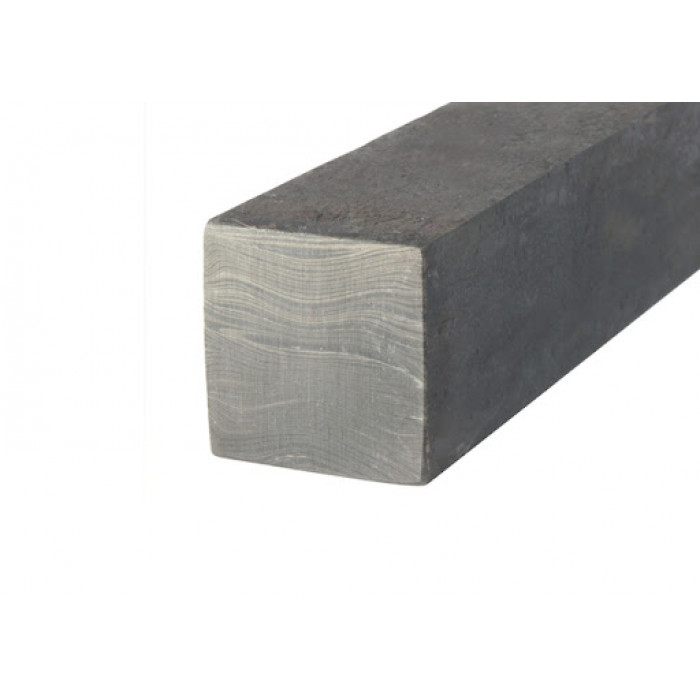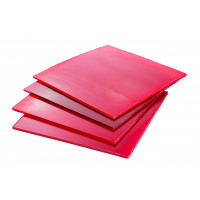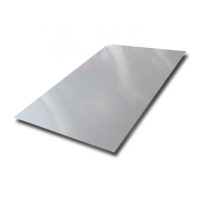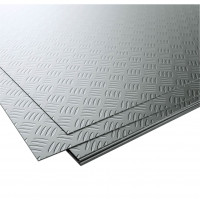Ishmael forging steel HVG, 40X, st45, 5HNM, 4X5V2FS, 6XV2S, tool steel 9XS, X12MF, high speed steel R6M5, R18, spring steel 65G, 60S2A production
Forging is such a product or blank (an intermediate link in the production of any part, equipment) made of steel of strong grades, the use of which is widespread in many industries, automotive, and agriculture. A feature of such a blank is its similarity in shape and size with the future product. Such properties of these products as strength, flexibility, wear resistance have made them indispensable constituent elements in the production of various parts.
Production process of steel forgings
Today, many enterprises engaged in the sale of forgings have their own steel shops equipped with modern high-tech equipment.
Specialists carefully select raw materials for the production of such products, taking into account their future scope of operation. They reveal what loads the part will be subjected to in the future, in what environment it will be operated. After processing the information received, the most suitable steel grades for specific operating conditions are selected.
Steel forgings are manufactured strictly in accordance with the technical parameters, which are regulated by GOST 8479-70, GOST 7505-83, GOST 25054-81, GOST 7829-70, etc.
The standards impose special technical requirements on the weight, shape, composition (steel grade) of the product, as well as methods for conducting research, testing products for strength and other parameters.
Currently, two methods are used for the production of steel forgings:
1. Method of free (forging) forging. In this case, the shape of the workpiece is polished by means of repeated blows. The product can be produced in a cold or hot way, when the workpiece is preheated.
2. Stamping method. This method is characterized by uniform pressure on the primary workpiece, as a result of which all surfaces of the model are formed. This manufacturing method is the most acceptable, because it eliminates the spreading of the metal. And the quality of the finished product will depend only on the properties of the stamp.
Now manufacturers sell their goods through Internet sites, where they can talk about the merits of their products, the stages and methods of its production. For example, you can learn more about steel forgings here: http://vladresurs.ru/.
Depending on the elements included in the composition, steels differ in grades. In the production of blanks, different brands are used, based on this they are divided into different types.
Types of forgings and their main purpose
Forgings carbon
They are made from special types of carbon steel, which are particularly durable. The property of strength is marked on the product with a number after the letters "KP". The customer can choose the steel grade and tensile strength for these products. Such blanks are successfully used in construction, for the manufacture of reinforcement structures, are used in the metallurgical, petrochemical, industries, and are supplied to crane-building and bearing plants.
Press forgings
Such blanks are produced by stamping with a press. This species is especially common in mechanical engineering, mining and petrochemical industries and other areas.
Hammer forgings
Produced using a blacksmith's hammer, sledgehammer. They have improved hardness and flexibility. Also widely applicable in the automotive industry and various industries.
Forgings stainless
These forgings, made of a homogeneous structure, pure stainless steel, are in demand in the electrical industry, shipbuilding. The dimensions of this group of blanks can be calculated in tons. They are used for the production of turbines, shafts.
Forgings alloyed
They are made from special (alloyed) steel, the composition of which endows the future product with additional substances: manganese, nickel, silicon, cobalt, chromium, etc. Therefore, unlike other types, such forgings have additional properties.
The elements that make up this steel are capable of imparting special qualities to the workpiece: increased hardness, corrosion resistance, etc.
Tool forgings
This type of forgings are made from carbon and/or alloy steel. The main area of application is the manufacture of tools of high precision and strength. Such blanks are produced in the form of cutters, mandrels and other forms. Such forgings have found their application in agriculture, as components for tractors and agricultural implements, and other areas.
Forging configurations
Depending on the application, forgings differ in appearance, and there are:
- round shape and round shape with ledges (in the form of disks, disks without holes and with holes, shafts, rings, etc.);
- rectangular section (in the form of a bar, a cube, a cylinder, plates).
When buying steel forgings, it is necessary to build on the conditions under which they will be used. Depending on this, the customer can set his own specificproduct requirements in terms of choice of steel grade, size, weight and configuration. Modern manufacturers clearly follow all the instructions of the client and try to satisfy his requirements as much as possible, supplying high-quality certified goods at low prices.
Scope of application of forged metal
In construction, forgings are used as elements of metal structures, supports and fences, as well as for the production of various fasteners (anchors, clamps, brackets, etc.)
In the engineering industry, forgings are often used as blanks for the manufacture of machine parts: axles, shafts, gear elements (gears, rings), disks, bearings, etc.
in the petrochemical industry.
In the energy sector from forged rolled metal shafts of rotors and compressors, connecting parts (flanges), cylinders.
Forgings in shipbuilding are the main blanks for propeller, thrust and intermediate shafts, ship hull parts, etc.
At the enterprises of the metallurgical industry, forged products are used as guide columns, roller mills, and pipe blanks.
In the mining industry.
There are many forms of finished products. They depend on the shape of the press equipment used. Most often, forgings from a square billet are used. They are obtained by stamping or machine forging. Consider the existing types of forgings: Stainless. Made from corrosion resistant steel. In production, a material with a homogeneous structure is used. Products are in demand in shipbuilding and the energy industry. Large parts such as shafts or turbines of thermal power plants are made from them, so their weight can be calculated in tons. alloyed. They are made from special grades of steel that contain elements designed to improve the performance of the metal. These include chromium, manganese, nickel, silicon and cobalt. These materials are able to give the metal increased hardness, strength and other useful properties. Press forgings. Such blanks are obtained by hot or cold plastic deformation of metal on presses. They are widely demanded in engineering, shipbuilding, mining and other industries. Hammer forgings. Obtained by forging metal. The blanks are characterized by high hardness and flexibility. They are used in the automotive industry in the manufacture of load-bearing elements and large transport units. Instrumental. Made from carbon or alloy steel. Excellent performance properties are in demand in the production of high-strength precision tools and other industries. Differ in a variety of forms. Carbon. Such blanks are obtained from high-strength steel grades. They are actively used in construction in the manufacture of load-bearing structures of objects. In addition, they are used in bearing production. Do not confuse forging and rolled metal. Despite the visual similarity, the materials differ in the method of production and, as a result, in the technical characteristics, even when using the same steel grade. Special mention deserves blanks with a galvanized surface. The thickness of the protective layer depends on the brand of the product. Zinc is resistant to corrosion and aggressive environments. This allows several times to increase the service life. Galvanized blanks are in demand in difficult climatic conditions. Despite the variety of shapes, the most demanded in the industry is square forging. Production Methods The manufacture of forgings is a rather complex technological process. There are two methods for obtaining blanks: Forging. This method of production of forgings is characterized by preheating the metal to a plastic state. After that, the workpiece is given the desired shape using the shock load of a hammer or press. A feature of the process is the free position of the workpiece during processing. Forgings obtained by forging are distinguished by a high machining allowance. This figure is almost 2 times higher than that for stamped products. Bending, drawing and drawing are also varieties of forging. Stamping. The main role in the production process is played by a special equipment, which is called a stamp. The matrix acts on the workpiece with high pressure. Its shape completely repeats the contours of the finished product. The function of the power element is performed by the punch. The production process can run both in cold and hot mode. The method is characterized by high performance. Maintenance of the equipment does not require highly qualified workers. Compared to forging, the finished product has more precise dimensions and less surface roughness. The only disadvantage of stamping is the high cost of the equipment. It is advisable to use it only in mass production. Forging manufacturing process Regardless of the method of obtaining the finished product, the production of forgings consists of the following:stages: Cutting metallurgical rolled products into segments of the required size. The standard size and cross-section of the feedstock depends on the capabilities of the suppliers. It can be a circle, a square, a polyhedron, and even a channel or an I-beam. metal deformation. During forging, the workpiece is ground under the action of repeated impacts. Forging is characterized by uniform pressure on the forging, resulting in a finished surface. Normalization and release of the workpiece. The quality of the finished product is determined by technical control specialists. Benefits of use Foundries are engaged in the production of the products in question. They are supplied with blanks of forgings, where they undergo a full technological cycle, including heat treatment. The finished product has the following advantages: excellent performance characteristics; stable mechanical properties; high resistance according to Brinell; low cost. The blanks do not require special storage conditions. If necessary, they can be stored even on an open construction site. They retain their properties for a long time. The surface of the product is of high quality. There are no shells, burrs, sagging or other defects on the blanks. In addition, in the process of metal processing, there is no decarburization of the material. GOST 7509-89 This interstate standard defines the value of tolerances, allowances and forging overlaps of steel forgings made by hot forging. There are weight and size restrictions. The standard states that for workpieces weighing more than 250 kg and dimensions of more than 2500 mm, tolerances, rounding radii of outer corners and other parameters are set by negotiations between the manufacturer and the customer. Forgings are a product in demand in various industries. They are obtained by forging and stamping blanks.
No questions about this product, be the first and ask your question.





